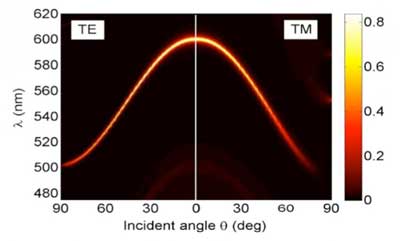| Posted: Apr 25, 2018 |
Turning graphene into light nanosensors
(Nanowerk News) Graphene has many properties; it is e.g. an extremely good conductor. But it does not absorb light very well. To remedy this limiting aspect of what is an otherwise amazing material, physicists resort to embedding a sheet of graphene in a flat photonic crystal, which is excellent for controlling the flow of light. The combination endows graphene with substantially enhanced light-absorbing capabilities.
|
|
In a new study published in EPJ B ("Tunability of temperature-dependent absorption in a graphene-based hybrid nanostructure cavity"), Arezou Rashidi and Abdolrahman Namdar from the University of Tabriz, Iran demonstrate that, by altering the temperature in such a hybrid cavity structure, they can tune its capacity for optical absorption. They explain that it is the thermal expansion and thermo-optical effects which give the graphene these optical characteristics. Potential applications include light sensors, ultra-fast lasers, and systems capable of modulating incoming optical beams.
|
 |
| Absorption on the plane of incident angle and wavelength. (© Springer)
|
|
The authors study the light absorption of the material as a function of temperature, the chemical energy potential, the light polarisation and its incidence angles. To do so, they use a modelling method called the transfer matrix method. They find that for normal light incidence, there is enhanced absorption at room temperature, while the absorption peak is shifted toward the red as the temperature increases.
|
|
As light comes in at an angle, the authors show that the absorption peaks are sensitive to the incident angles as well as the polarisation state of the light. They also find that by increasing the incident angle, the peak wavelength is shifted toward the blue.
|
|
They conclude that the peak wavelength can be controlled by varying either the temperature or incident angle, as well as the chemical energy potential of graphene. This shows that there are a number of tunable features that could be exploited for the design of graphene-based nano-devices, such as temperature-sensitive absorbers and sensors.
|

